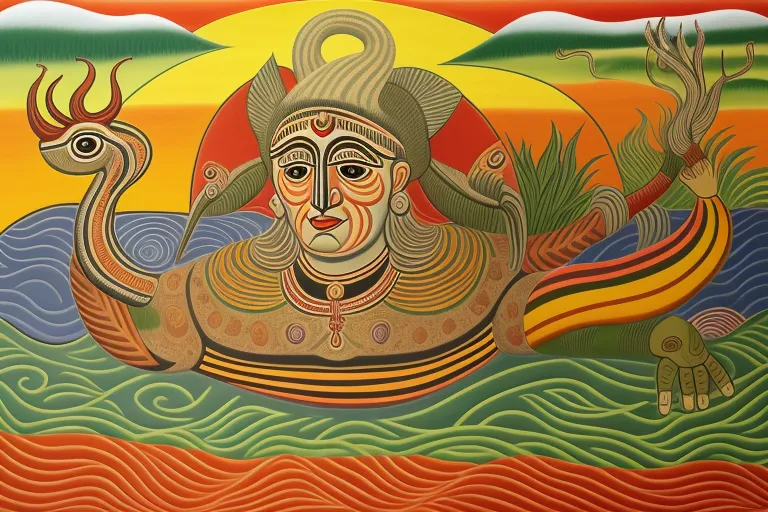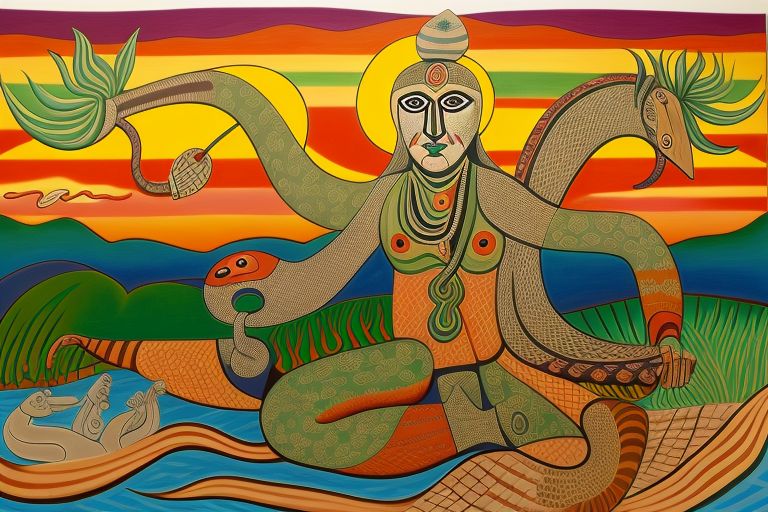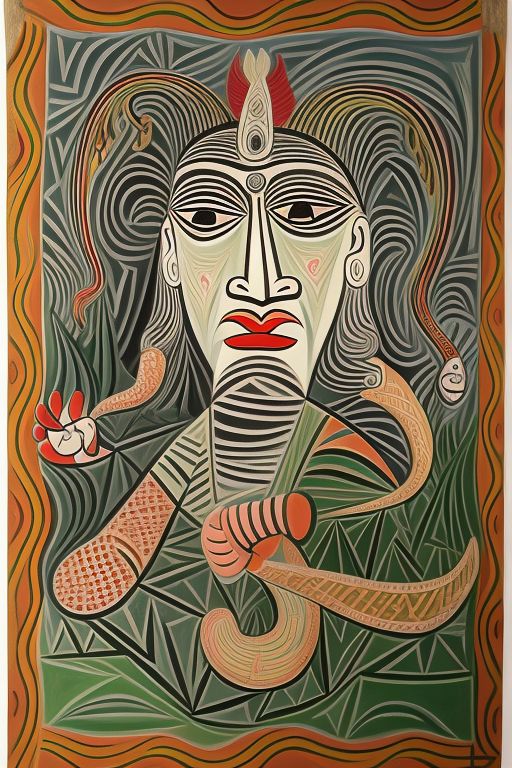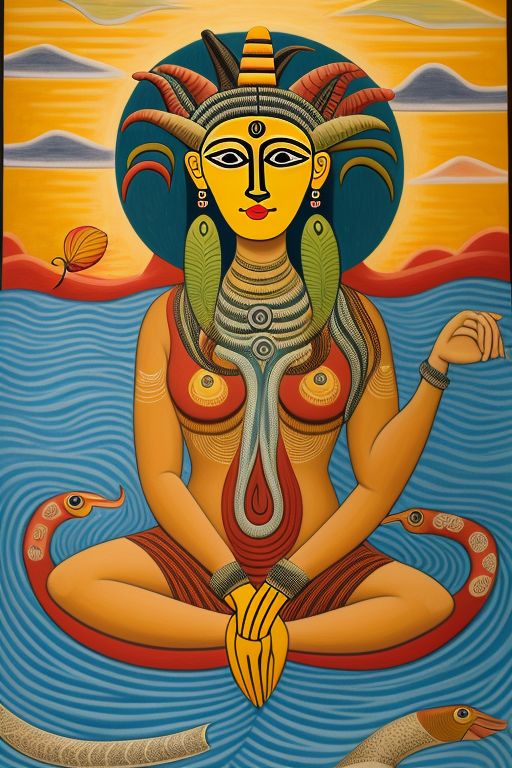AI Prompt – In the Style of Pablo Picasso – Create a lifelike Image of Ancient god – Bunzi is sometimes depicted as a multicolored serpent that rewards those who worship her with an abundant harvest. She also said to appear in the rippling water of the river at sunset. – using Electric Color





In this cubist interpretation of Bunzi, we deconstruct her form into a kaleidoscope of geometric shapes and electric colors. Her serpentine body undulates and twists, reflecting the fluidity and movement of the rippling water in which she is said to appear. Each facet of her being is imbued with a sense of energy and vitality, capturing the essence of Bunzi’s role as a guardian of the natural world.
The use of electric colors adds a modern twist to Bunzi’s ancient mythology, infusing the scene with a sense of vibrancy and dynamism. Shades of neon green, electric blue, and fiery orange dance across the canvas, creating a visual symphony of light and color. These vivid hues evoke the magical aura of Bunzi’s presence, as she emerges from the depths of the river at sunset to bestow her blessings upon the land.
As we delve deeper into the composition, we encounter fragments of Bunzi’s form scattered across the canvas, each offering a glimpse into her divine nature. Her multicolored scales shimmer and gleam, reflecting the changing hues of the setting sun and the rippling water below. With each brushstroke, we seek to capture the enigmatic beauty and transcendent power of Bunzi, as she manifests in the natural world.
Bunzi’s association with fertility and abundance is symbolized through the abundance of vibrant colors and dynamic forms that surround her. Lush fields of greenery and blooming flowers stretch out in all directions, symbolizing the fertile earth that Bunzi nurtures and protects. Her presence is a testament to the cyclical nature of life and the eternal renewal of the natural world, as she brings forth the bounty of the harvest with her divine presence.
In this cubist reinterpretation of Bunzi, we seek to evoke the timeless allure and mystical aura of this ancient deity. Through the use of electric colors and dynamic forms, we capture the essence of Bunzi’s mythic power and eternal presence in the natural world. As viewers gaze upon the canvas, they are transported into a realm of divine beauty and cosmic wonder, where the boundaries between the earthly and the divine blur and merge in a kaleidoscope of color and form.
